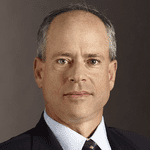
DG+IG project to transform a San Francisco neighborhood
Through its leadership on the Hunters Point Project, the Clean Coalition is creating a world-class example for guiding San Francisco and other communities on reaping the benefits of clean local energy.
The Clean Coalition – in collaboration with the City of San Francisco, PG&E, and others organizations – is spearheading a groundbreaking clean local energy project in the Hunters Point area of San Francisco. The Hunters Point Distributed Generation + Intelligent Grid (DG+IG) Project is one of several undertakings the Clean Coalition is conducting to prove that local renewables can achieve at least 25% of total electric energy needs within the distribution grid while maintaining or improving power quality, reliability, and resilience.
Designed to highlight the technical and economic viability of achieving high penetrations of clean local energy, the Hunters Point Project marks a key step in fulfilling one of the Clean Coalition’s overarching objectives: from 2020 onwards, at least 50% of all new energy generation in the United States come from local sources. In addition to proving the technical and economic viability of high penetrations of local renewables, DG+IG projects set the stage for Substation Microgrids.
Importantly, the Project will serve as a model to guide the nation’s rapid energy transition, improve grid performance in terms of power quality, reliability, and resilience, and will engage all communities – from underserved to affluent – in the new energy economy. To ensure success, the Hunters Point DG+IG Project will model the entire grid area served by the Hunters Point substation and simulate the grid performance in the comprehensive and cost-optimized DG+IG scenario.
The Clean Coalition is currently working with PG&E and various San Francisco agencies to model high penetrations of DG, identify rooftops and parking lots as potential sites to host local solar, and find opportunities for biogas and wind projects in Hunters Point. Advanced inverters, demand response, energy storage and monitoring, communications, and control (MC2) solutions are being evaluated to maximize the benefits of DG+IG.
DG+IG projects like the one in Hunters Point will set the stage for fully featured Substation Microgrids that offer many benefits, including:
- Maximizing renewable energy in the near-term
- Enhancing the grid through improved power quality, reliability, and resilience
- Localizing economic benefits, such as creating community jobs, keeping energy spending local, and providing investment opportunities to local residents and businesses
- Improving grid efficiency by eliminating significant costs and power losses associated with the long-distance transmission of energy
- Enhancing the quality of life for local communities by replacing dirty fossil fuel power plants that endanger human and environmental health
Through its leadership on the Hunters Point Project, the Clean Coalition is creating a world-class example for guiding San Francisco and communities around the globe for reaping the benefits of clean local energy.


